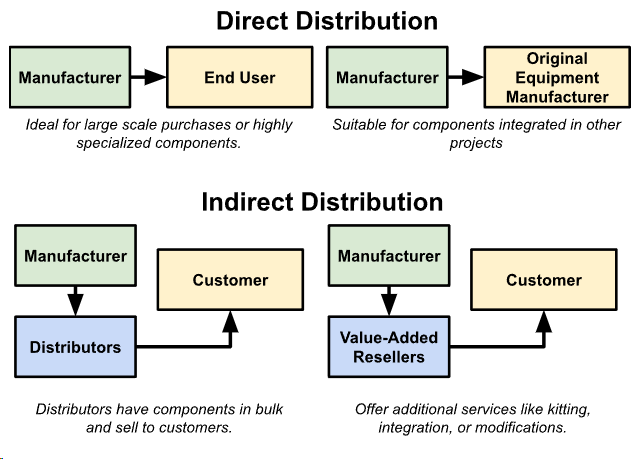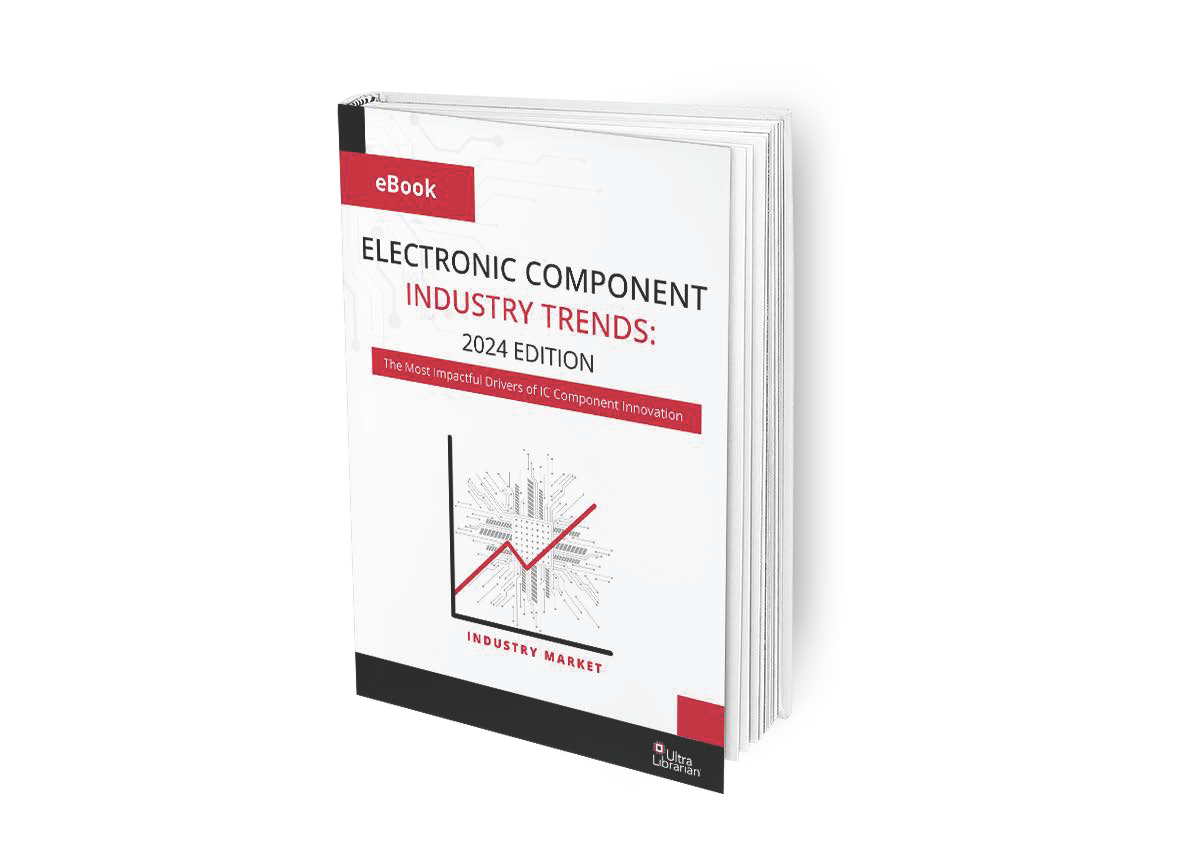
Whether direct or indirect distribution, essential factors for choosing the right distribution channel for electronic components are sufficient warehousing to ensure component availability.
Electronics component distributors play an important role in the electronics industry by bridging the gap between manufacturers and a diverse customer base. They not only supply components but also provide value-added services such as engineering design support and supply assurance.
Choosing the right distribution channel involves understanding how engineer’s select component sources. By evaluating these and incorporating other factors, you can choose the distribution channel type that best helps your engineering audience optimize their electronic component sourcing.
Distribution Channel Criteria for Engineers
Choosing the best distributor and distributing channel to help your target audience easily procure your electronic products is significantly improved by understanding the factors that influence engineer’s distributor selection. Key criteria that engineers use are listed below.
| HOW ENGINEERS CHOOSE DISTRIBUTORS | |
| Criteria | Recommended Actions for Assurance |
| Quality Assurance | Inquire about the distributor’s quality control processes and certifications like ISO 9001 or ERAI. |
| Authenticity Guarantee | Verify that the distributor sources components from reputable manufacturers or authorized sources. |
| Inventory and Availability | Evaluate the distributor’s inventory levels and lead times to ensure they can meet your project timelines. |
| Pricing and Payment Terms | Compare pricing and payment terms from multiple distributors to ensure competitiveness and affordability. Consider volume discounts, payment options, and shipping costs when evaluating pricing. |
| Geographical Coverage and Logistics | Consider the distributor’s geographical coverage and logistics capabilities, especially if you require international shipping or have specific delivery requirements. Choose a distributor with efficient logistics networks and reliable shipping options to minimize lead times. |
| Industry Experience and Expertise | Look for distributors with experience and expertise in your industry or application domain. |
As the list above illustrates, making information available to engineers is important. Providing this information necessitates developing a product market strategy that connects with and engages engineers via their preferred component data source, and connects them with a distribution channel type that meets their requirements.
Types of Electronic Distribution Channels
Electronics manufacturers have two competing options for getting components to their customers, direct or indirect distribution, as shown below.

Direct vs indirect electronic component distribution channels summarized.
Direct Distribution
- Manufacturer to End-User: Direct sales from manufacturers to end-users are ideal for large-scale purchases or highly specialized components. For example, telecommunications companies might source high-performance processors directly from IC manufacturers for data centers that require specific configurations and performance guarantees.
- Manufacturer to OEM: Direct sales to Original Equipment Manufacturers (OEMs) are suitable for components integrated into other products. For instance, a capacitor manufacturer may supply parts directly to automotive, medical devices, aerospace, or other system manufacturers.
Indirect Distribution
- Distributors act as middlemen who buy components in bulk and sell them to customers. They offer a range of products, support, and flexible payment options. Some suppliers provide extensive catalogs of components from multiple manufacturers, along with value-added services like design support and inventory management.
- Value-Added Resellers (VARs) distribute components and add value by offering additional services like kitting, integration, or custom modifications. An example would be a VAR that assembles custom PCB kits for hobbyists or small-scale manufacturers, including all necessary components and detailed assembly instructions.
Choosing the Right Distribution Channel for Your Products
Understanding how your audience thinks and delivering the data and information they want is the first key to beneficial engagement with engineers. Equally important is to have a robust digital presence that easily links to a procurement resource. Prioritizing the needs and preferences of your audience should be a primary factor in choosing the right distribution channel for your electronic products. Additional important considerations, include:
-
Cost Implications
Compare the cost structures of direct vs. indirect channels. Include factors like shipping, handling, and storage costs. For instance, while direct shipping from a manufacturer might save on distribution costs, the logistics and handling for large volumes might be more efficiently managed by a distributor with an established infrastructure.
-
Benefits of a Hybrid Approach
Combining direct and indirect channels can offer flexibility. Direct channels can cater to key accounts or specialized needs, while distributors handle bulk sales and widespread distribution. For example, a semiconductor manufacturer might sell directly to large automotive OEMs for specific high-volume components, while using distributors to reach smaller customers or different market segments.
How effectively and efficiently your electronic products are distributed are critical determinants that impact profitability and ROI. Consequently, many of the electronics industry’s leading manufacturers opt for partnering with the industry leader in connecting with and providing component CAD models, data and design information. In addition to being the most trusted resource for engineers, Ultra LIbrarian has the expertise and resources to help you maximize your marketing efforts to your audience.
Discover how Ultra Librarian helps manufacturers. With services and resources tailored to streamline CAD creation and amplify part downloads, Ultra Librarian empowers manufacturers to boost productivity and drive part downloads. By leveraging these tools, manufacturers can achieve greater success in today’s competitive market landscape.








